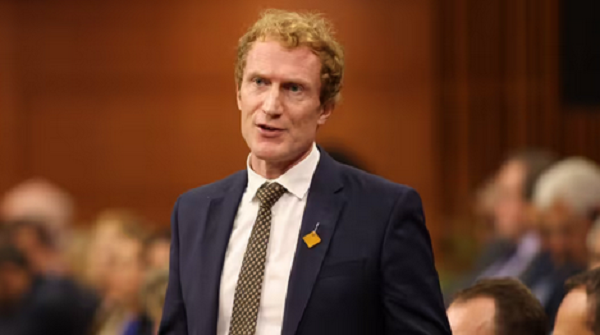Private healthcare charging patients to access primary care – this is against the Canadian Health Act
More and more high-profile Canadian doctors are speaking out against the rise of for-profit health care, arguing that companies charging patients to access primary care are violating the spirit, if not the letter, of the Canada Health Act.
This includes private medical clinics or virtual care platforms to which patients pay membership or subscription fees to get medically necessary care already covered under provincial health insurance plans.
“I think the biggest concerns lie with private pay issues that are arising from things like user fees and extra-billings being passed on to patients that are really beginning to distort access to care,” said Jane Philpott, a family physician, former federal health minister and currently dean of the faculty of Health Sciences at Queen’s University.
“A fundamental pillar of how our Canadian health insurance plan was designed was to ensure that people have access based on medical need rather than ability to pay.”
But, she adds, “you can’t blame the people who are pulling out their chequebook or credit card because they’re just desperate to get help. The blame here lies in not fixing the health system issues that are causing all these access problems.”
Philpott’s comments come after the release of a draft policy paper by the Canadian Medical Association late last month setting out its positions on the intersection of for-profit business with the public health care system. The paper put forward nearly two dozen recommendations, including calling for an end to patients being charged fees to gain access to primary care covered by universal health care. More than 20 per cent of Canadians do not have access to a family doctor or nurse practitioner.
After the release of the CMA paper, the Star reached out to four physicians at the top of their fields, including Philpott, to ask what keeps them up at night when it comes to the expansion of for-profit health care. These are the major themes that emerged.
Patient-pay virtual care platforms
While no doubt convenient for patients who can see a physician or nurse practitioner in short order from the comfort of their own home, virtual care companies that charge for access to primary care have raised the ire of many in the medical profession, including Dr. Melanie Bechard, a pediatric emergency physician at CHEO in Ottawa and chair of Canadian Doctors for Medicare.
She laments that some health-care practitioners are taking advantage of loopholes in the Canada Health Act, which specifies that medically necessary care pertains to care provided by a physician or in a hospital in order for provinces to receive their full Canada Health Transfer payments. The Act, which became law in 1984, is understandably silent on other health-care providers, such as nurse practitioners, or technological platforms that have emerged in the ensuing years.
During the pandemic, some virtual care companies launched chat-based medical services, which are not covered by OHIP, giving patients the option to pay out of pocket.
“It makes perfect sense that these other health-care professionals are trained to deliver a service that is helpful and that so many people need, so I don’t blame them for pursuing this model,” Bechard said. “But I think it’s absolutely horrible that people are being asked to pay for primary care especially when we see such a lack of support for physicians working in primary care through the publicly funded route.”
Philpott is more blunt: “If a private company is charging a fee for medically necessary care, i.e. care provided by a family doctor, that in my mind is a clear violation of the Act. So those provinces that are allowing this should have a clawback of the Canada Health Transfer.”
Last year, the federal government said it would not tolerate out-of-pocket charges to patients for publicly insured health care. Health Minister Mark Holland is expected in the near future to issue a letter interpreting the Canada Health Act that will clarify whether primary health care providers other than doctors can charge for the care they offer.
Outsourcing of publicly funded care to for-profit corporations
In January 2023, the Ontario government announced it was expanding the use of private clinics to provide publicly funded procedures, including cataract surgeries and joint replacements, in an effort to reduce backlogs brought on by the COVID-19 pandemic. This is in addition to the already 26,000 OHIP-insured procedures, such as endoscopies and CT scans, performed every year in what are known as “Integrated Community Health Services Centres.”
Dr. David Urbach, head of the department of surgery at Women’s College Hospital, says research has shown that the private delivery of publicly funded surgeries draws resources away from and exacerbates wait times in the public health care system.
There’s no doubt, he says, that for certain patients needing specific surgeries, private clinics will improve access for those certain patients.
“But the cost comes for everybody else waiting in the public queue,” Urbach said. “The problem is, they’re not inventing new surgeons, nurses or anesthesiologists …(The private sector) has to draw those resources away from the public system.”
With close to 80 per cent of patients receiving their procedures within recommended wait times in 2023, Ontario’s provincial government reports that it already has the shortest surgical wait times of any province.
Urbach added that reporting has found surgeries that take place in these for-profit settings also cost more at a time when public hospitals already operate at “bargain basement prices” for these same services.
“It’s more expensive and it offends me as a taxpayer why we should subsidize private, for-profit businesses,” Urbach said. “Why not save the taxpayers money and invest it in public hospitals?”
He also highlighted a Canadian study that found private for-profit hospitals were associated with an increased risk of death.
“You could build these private clinics, you could staff them, you could do these procedures. Will it reduce wait times in the public system? No. Will it save money? No. Will it provide better quality of care? No.”
Dr. Danyaal Raza, a family physician at St. Michael’s Hospital, said there is “no doubt” in his mind that we need to expand the health system’s capacity for all sorts of things, including primary care and surgical services, but “I see no reason why we can’t do that on a not-for-profit basis, especially since it avoids the problems that plague for-profit care.”
To be sure, not all physicians or health-care providers think the expansion of private surgical centres is a bad thing, with many practitioners owning these community surgical and diagnostic centres or virtual care platforms and profiting from them.
Hannah Jensen, a spokesperson for Ontario’s Minister of Health Sylvia Jones, said in an email that “there will always be those that stand ideologically opposed to innovation in the health care system, but facts matter, and our government is making bold and innovative changes to connect more people to the care they need when they need it.
“Our government’s expansion to further leverage community surgical and diagnostic centres was and has always been about finding where there is capacity within our health care system to deliver more publicly funded procedures to reduce wait times and the surgical backlog,” said Jensen.
She added that as a result of the government’s plan, the province has seen the surgical backlog reduced to the pre-pandemic level, while increased public funding has grown diagnostic imaging capacity by an additional 97,767 MRI and 116,443 CT operating hours and added 32,000 cataract procedures.
Upselling is ‘part of the business model’
The province has stressed that patients will always be able to use their OHIP cards and “never their credit cards” to access procedures offered at these community surgical and diagnostic centres.
But the doctors the Star spoke to worry that privatizing the delivery of care is a slippery slope.
“Once publicly funded care is handed over to for-profit organizations, they are motivated to maximize profits by finding ways to charge patients for care, often in ways that not-for-profit hospitals don’t,” said Raza, referring to a practice known as “upselling.” This occurs when a patient is sold upgraded or additional services or products over and above what is covered by the public health care system.
Jensen stressed that the government has made changes to strengthen the oversight of private surgical centres by bringing them under the oversight of a patient ombudsman and putting into law that Ontarians will always access insured services with their OHIP card and not out of pocket.
Urbach notes that in many private clinics, upselling is “basically part of the business model.”
He uses the oft-cited example of patients going in for cataract surgery being pitched an upgraded lens for an added fee.
“This is kind of a fundamental problem of decision making in health care: how do you know what lens you need? You’re about to have your anesthetic and for a few hundred bucks extra or $1,000 extra, this might change your life. Who’s in a position to say no to that?”
This article was first reported by The Star













